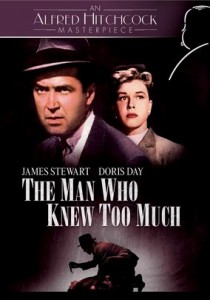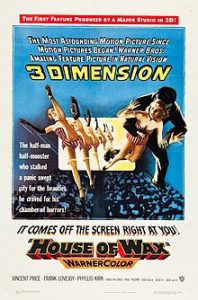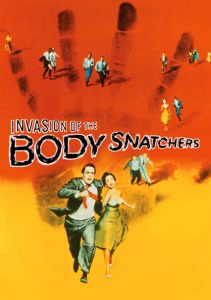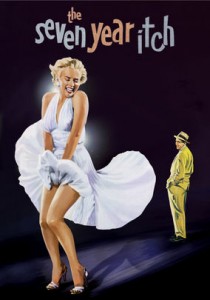The Man Who Knew Too Much-1956
Director Alfred Hitchcock
Starring James Stewart, Doris Day
Top 250 Films #20
Scott’s Review #176
Reviewed September 26, 2014
Grade: A
The Man Who Knew Too Much is a classic 1956 Alfred Hitchcock film starring James Stewart and Doris Day. The two share tremendous chemistry.
They play a successful married couple: Ben and Jo McKenna, a Doctor and a well-known singer, who travel on a lovely trip to Morocco with their young son Hank.
They are a traditional American family that the viewer trusts and believes in on vacation abroad.
Suddenly, they are approached by a Frenchman named Louis Bernard, who appears somewhat too curious about Ben and his work.
Jo is immediately suspicious of the mysterious man.
This begins a series of events involving mistaken identity, an assassination attempt on England’s Prime Minister, and a trip to London to locate Hank, who criminals have kidnapped.
As with other Hitchcock films—think North by Northwest (1959)—the motivational plot is unclear and, one might argue, unnecessary. Why are the characters attempting to assassinate a political figure? Is there money to be gained? Is there power to be obtained?
These questions are never answered- the film is not about that, but rather about Ben and Jo’s predicaments. The villains —primarily an innocent-seeming English couple and a sneering, rat-like assassin —are one-dimensional characters. The motivations are not revealed.
A remake of the 1934 film with the same title, but far superior, the film is a suspenseful political thriller.
Some interesting comparisons to other Hitchcock films released around the same time that I continue to notice with each passing viewing-
North by Northwest– the ordinary man falling into international intrigue, and Vertigo– Jo is dressed in almost identical fashion to Madeleine/Judy- a classic, sophisticated grey suit with a pulled-up bun hairstyle; the musical scores are incredibly similar- identical in instances; Vertigo’s bell tower is reminiscent of Ambrose Chappel in The Man Who Knew Too Much. Stewart’s Ben climbs up the bell tower in The Man Who Knew Too Much, whereas in Vertigo is terrified of heights, let alone climbing.
These are fascinating tidbits to note for any fan of Hitchcock.
Doris Day’s performance, which is her most fabulous, impressed me. Known for her roles in lightweight romantic comedies and fluff, she proves to be a wonderfully emotional and dramatic character, quite effective in her own right.
The six-minute climactic final sequence, set at a musical concert at the Royal Albert Hall, is among the best in film history and uses no dialogue. This technique is jaw-dropping, as one realizes how much transpires within the six minutes, solely based on physical activity and facial expressions. The entire plot of the film reaches a searing crescendo—quite literally.
Day is strong in this sequence.
In his fourth turn in a Hitchcock film, James Stewart is charismatic, playing the everyman tangled in a web of deceit and espionage. He takes charge but identifies with the audience; he can be your friend or neighbor, and we trust his character because he is a successful doctor.
The now-legendary song from the film, “Que Sera, Sera (Whatever Will Be, Will Be),” is an integral part of the finale and remains with the audience in a bittersweet yet enduring way long after the curtain closes on the film.
The Man Who Knew Too Much (1956) is exciting, suspenseful, engaging, and fun- just what a Hitchcock film should be.
Oscar Nominations: 1 win-Best Song-” Que Sera, Sera (Whatever Will Be, Will Be)” (won)



